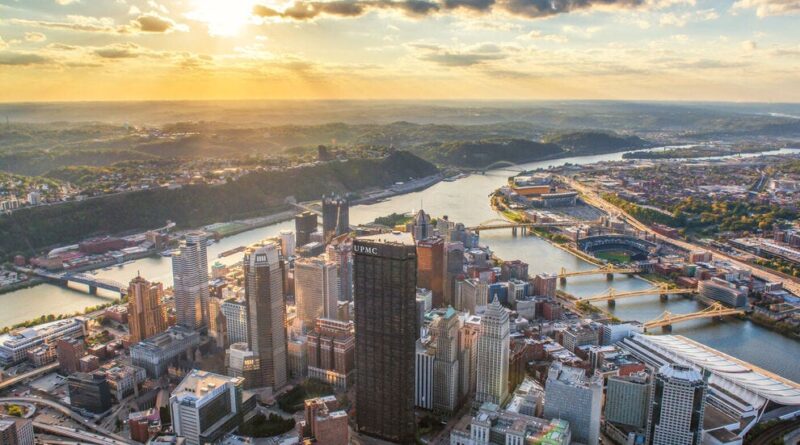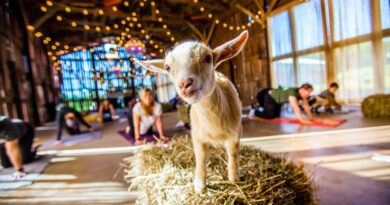First-timer’s guide to this welcoming city
Delving below the surface to explore dozens of diverse neighborhoods in “The City of Bridges”
Pittsburgh had the first cable suspension bridge, the Monongahela Bridge (1846) — Photo courtesy of Dave DiCello
There is a pride that circulates among Pittsburgh residents – welcoming folks eager to share their favorite parts of what makes this place tick. It doesn’t take long to learn that “The City of Bridges,” famed for its 446 bridges and three mighty rivers, has a true boomerang effect, too, consistently luring back locals who’ve gone away and returned to this highly livable Western Pennsylvania town.
Sure, first-timers will want to visit claim-to-fame finds ranging from the famous red couch at the Andy Warhol Museum and the nostalgia-inducing “Mister Rogers’ Neighborhood” exhibit at The Heinz History Center, to the Duquesne Incline (for panoramic city views) and a Primanti Bros. shop (for a hearty sandwich stuffed with fries and coleslaw). But it turns out there are many more layers to this city, waiting to be peeled back by visitors curious and patient enough to do so.
Exploring urban green spaces
 Phipps Conservatory is a tranquil, green oasis in the Oakland neighborhood that hosts seasonal must-sees — Photo courtesy of Phil Johnson II
Phipps Conservatory is a tranquil, green oasis in the Oakland neighborhood that hosts seasonal must-sees — Photo courtesy of Phil Johnson II
Those who arrive with pre-conceived notions of “the Steel City’s” industrial powerhouse past will be impressed to learn about a remarkable environmental renaissance that’s taken place in recent decades. Among other feats that have made Pittsburgh a model for cities around the globe, it’s home to the first green college residence hall, in addition to the exquisite Phipps Conservatory and Botanical Gardens, which was awarded a net-zero energy and water designation as a “Living Building.”
In summer 2021, the Pittsburgh International Airport became the first in the world that’s completely powered by an independent microgrid. (It’s only fitting that this was the birthplace of lauded environmentalist Rachel Carson, for whom one of downtown’s yellow Three Sisters bridges – spanning the Allegheny River – is named.)
Outdoor enthusiasts will enjoy wandering spacious urban parks – from Frick to Highland – and soaking in Pittsburgh’s green hillsides and distinctive skyline along its many riverfront trails, perhaps with tours offered by Bike the Burgh. Among Western Pennsylvania’s hundreds of miles of rails-to-trails conversion projects, the Great Allegheny Passage links Pittsburgh to Washington, D.C.
Located about 70 miles from downtown Pittsburgh, Frank Lloyd Wright’s Fallingwater is an architectural masterpiece nestled into southwest Pennsylvania’s Laurel Highlands. Nearby Ohiopyle State Park, prime for hiking and whitewater adventures, encompasses about 20,500 acres of rugged natural beauty including the rushing Youghiogheny River.
And just outside of town, Kennywood draws youngsters and kids-at-heart to a beloved amusement park that was designated a National Historic Landmark in 1987. Today, it still showcases three roller coasters dating back to the 1920s.
Soaking in city culture
 The Andy Warhol Museum hosts special events, from gallery talks to intimate concerts — Photo courtesy of Jin Wu
The Andy Warhol Museum hosts special events, from gallery talks to intimate concerts — Photo courtesy of Jin Wu
Downtown hotels provide ideal home bases for savoring live music and theater at venues both grand (Heinz Hall, The Benedum Center for the Performing Arts) and intimate, like Con Alma, a cozy jazz bar serving soul food that rotates with the season. Staunchly loyal sports fans also appreciate easy access to nearby stadiums on game days when the entire city buzzes with pride-filled enthusiasm.
While the Omni William Penn Hotel pampers those seeking more grandeur during a downtown stay, Kimpton Hotel Monaco Pittsburgh brings hip, modern perks to an iconic Beaux Arts-style James H. Reed building. Guests and locals alike appreciate Monaco’s dog-friendly amenities, plus a seasonal rooftop Biergarten, perched nine stories above William Penn Place. There’s also a year-round gathering space called The Commoner, which is known for tasty tavern fare with a twist, plus brews by popular local hangouts like Cinderlands and Arsenal Cider House.
Fairmont Pittsburgh, whose ultra-comfortable, upper-level rooms showcase some of the best elevated views around, is an ideal address from which to visit Pittsburgh Cultural District highlights like August Wilson African American Cultural Center, a 3,600-square-foot exhibition that honors the life and works of the Pulitzer Prize-winning playwright. Consider starting the day with French toast or a croissant breakfast sandwich at Sally Ann’s; afterward, be sure to check out seasonal pop-ups – like a wintertime skating rink – that enliven Market Square.
 The Heinz History Center, in the historic Strip District, shares inspiring tales from the folks who’ve helped shape Western Pennsylvania’s past and present — Photo courtesy of Rachelle Shoen
The Heinz History Center, in the historic Strip District, shares inspiring tales from the folks who’ve helped shape Western Pennsylvania’s past and present — Photo courtesy of Rachelle Shoen
Aside from its vast and varied arts offerings, Pittsburgh is also a global leader in the realm of robotics; in 1988, Carnegie Mellon University launched the world’s first Robotics PhD program. And on the North Side, visitors can see how the city’s booming space ecosystem has made exciting leaps with the opening of the Moonshot Museum, which offers behind-the-scenes peeks of the construction of the first American lander since Apollo.
At Carnegie Science Center, “Mars: The Next Giant Leap” aims to prove how space can be accessible to all. The brand-new, interactive exhibit was created with input from students and community members who considered questions like: “Why explore other worlds when our own needs help?” and “Can living on Mars help us live better on Earth?”
Nearby, 40 North offers an alluring culinary experience attached to the bookstore associated with City of Asylum, a nonprofit that hosts the world’s largest residency program for writers living in exile under threat of persecution. Most weeks, three to four readings, concerts or films take place on the Alphabet City stage found in the adjoining space.
Honoring Pittsburgh’s heritage
 In the 1820s and 1830s, the Strip District was home to glass factories, iron mills and foundries — Photo courtesy of Jin Wu
In the 1820s and 1830s, the Strip District was home to glass factories, iron mills and foundries — Photo courtesy of Jin Wu
Getting out into some of Pittsburgh’s 90 distinctive neighborhoods proves a prime way to delve even deeper into local culture, whether you head to Polish Hill for pierogies or to Bloomfield, where “Little Italy” nostalgia exists alongside newer venues like Apteka, coveted for its Eastern European vegan fare.
Leading up to your explorations, we’d recommend taking a tour of the Nationality Rooms inside the University of Pittsburgh’s magnificent 42-story, Gothic-style Cathedral of Learning; these ornate spaces set the stage for a better understanding of the city’s rich fabric and diverse communities.
Experience quintessential Pittsburgh in the historic Strip District, a bustling shopping zone of kitschy sportswear retailers, global grocers and local vendors selling delicacies from coffee to fresh biscotti. Grab a casual Italian lunch at DiAnoia’s Eatery (think paninis and potato gnocchi with meatballs); in the evening, Penn Avenue Fish Company is the perfect space in which to celebrate among friends with delicious sushi rolls and BYO wine.
 Located 3 miles from downtown, Lawrenceville’s Butler Street is home to trendy bars and eateries, plus art galleries, boutiques and a historic movie theater — Photo courtesy of Jin Wu
Located 3 miles from downtown, Lawrenceville’s Butler Street is home to trendy bars and eateries, plus art galleries, boutiques and a historic movie theater — Photo courtesy of Jin Wu
Head to Lawrenceville for tasty Tuscan fare at Piccolo Forno (also a BYO eatery), followed by live music in the Thunderbird Cafe & Music Hall. The riverfront community of Millvale proves another magnet for concertgoers, thanks to Mr. Smalls venue, located in a former church, and neighboring breweries like Grist House and Strange Roots.
On the east end, Squirrel Hill lures bagel lovers to wildly popular kosher bakery Pigeon (worth the queue that often forms) and tropical cocktail enthusiasts to the inviting rooms of Hidden Harbor. In the Regent Square zone of Wilkinsburg, find standout French treats at Madeleine Bakery & Bistro, as well as quirky art and neighborly banter at Biddle’s Escape cafe.
In East Liberty, home to the Duolingo, Inc. headquarters, enjoy lunch at Duo’s Taqueria; patrons who practice language skills at the window with Duo’s Español Challenge can earn discounts on their Mexico City-style tacos. In the Friendship/Garfield neighborhoods, hands-on classes at the Pittsburgh Glass Center allow visitors to get behind the torch as they honor an industry that once thrived here, too. In fact, before Pittsburgh earned “Steel City” fame, it was known as “America’s Glass City,” with the region’s first two glass factories opening in 1797.
 Pittsburgh, the second largest city in Pennsylvania, is famously home to three rivers prime for kayaking in warmer months — Photo courtesy of Dustin McGrew
Pittsburgh, the second largest city in Pennsylvania, is famously home to three rivers prime for kayaking in warmer months — Photo courtesy of Dustin McGrew
Pittsburgh is a city that seems to adapt as is necessary, reinventing itself time and again. When steel production here experienced a steep decline in the 1970s and ’80s, the city bounced back and eventually became the powerful hub for education, medicine, small manufacturing and research that it is today.
Present-day residents are enthusiastic about the possibility of what’s to come – while still hanging onto pride for this city’s unique and defining past. They also seem tickled that their hometown, which sometimes glides just below the radar, maintains a power to surprise and delight visitors – and to keep them eagerly coming back for more.




